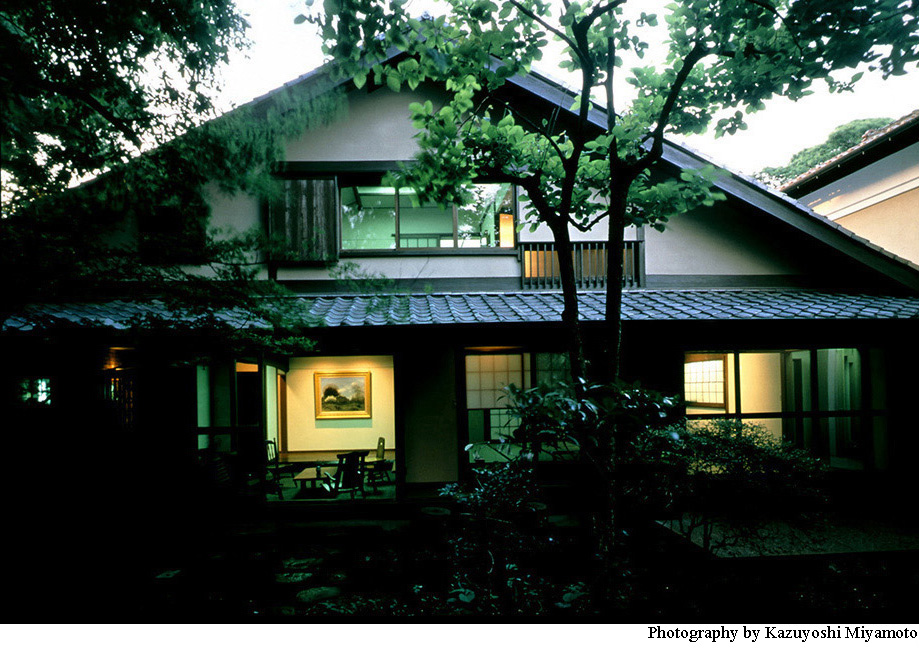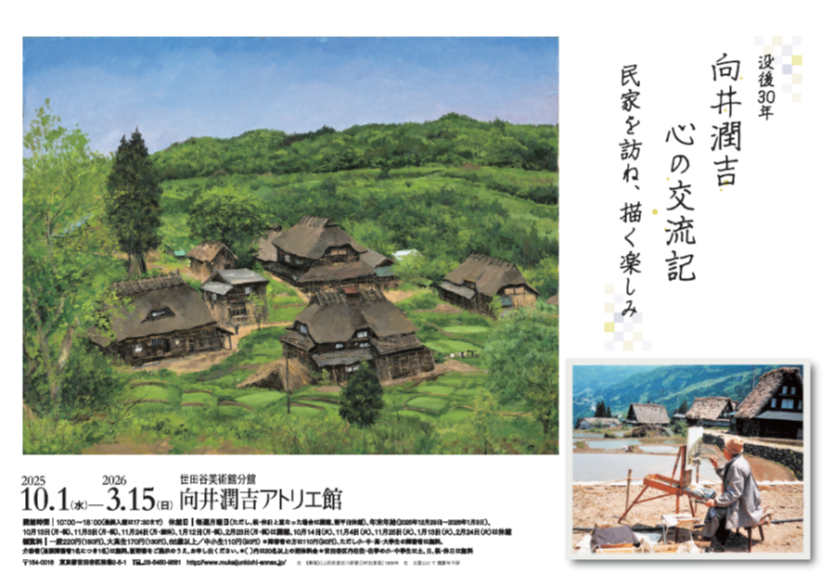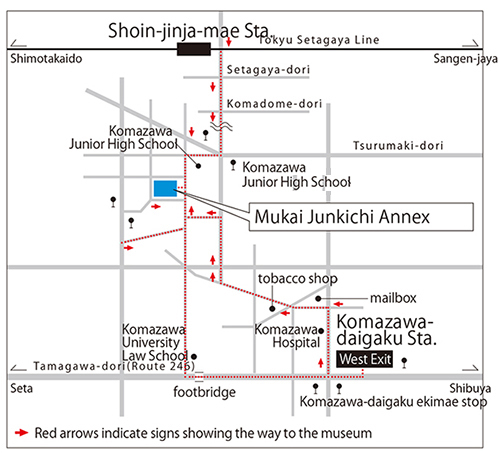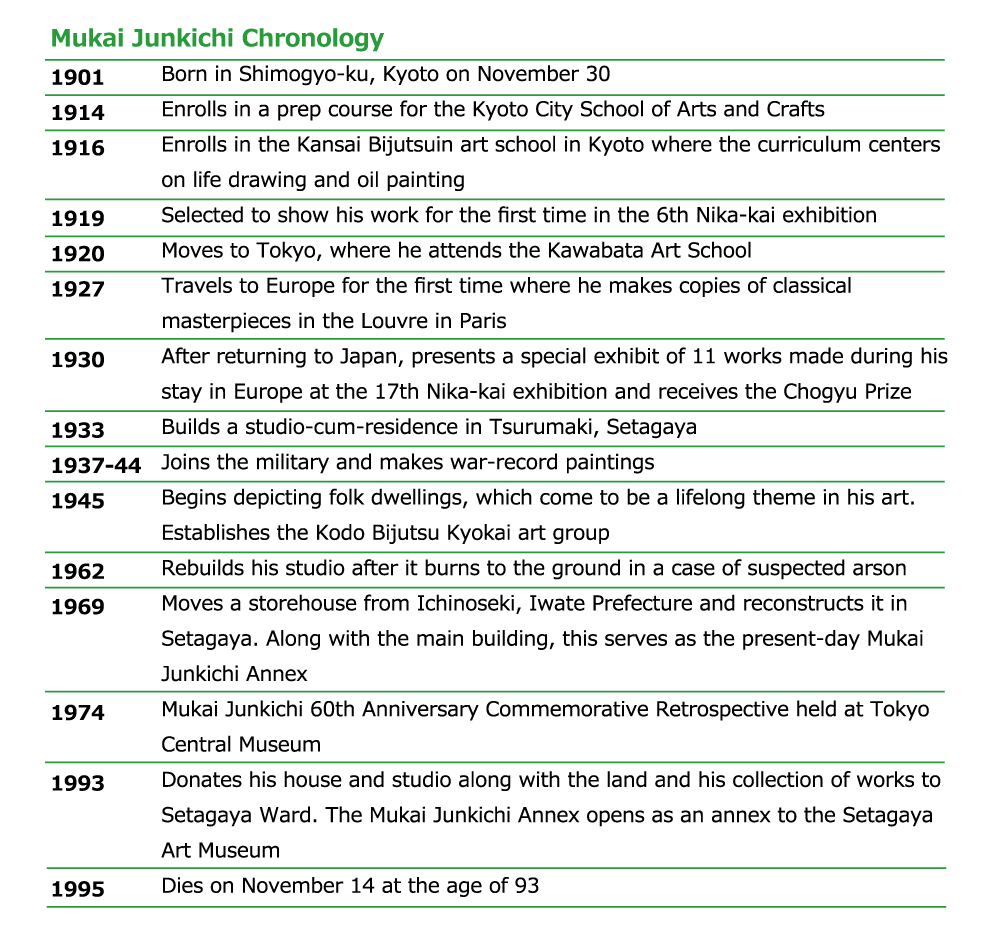>JAPANESE |
 |
Setagaya Art Museum Annex Mukai Junkichi Atelier Museum |
| After the painter Mukai Junkichi(1901-1995) remodeled his beloved studio-cum-residence
into a museum, the artist donated some 660 of his oil paintings and drawings
to Setagaya Ward. The building was opened as a museum annex in July 1993.
Visitors can retrace the steps of the artist who depicted Japanese folk
dwellings while gazing at the lush garden overgrown with a variety of vegetation. |
Exhibition  Flyer (Japanese Version Only) |
|
General Information Hours: 10:00-18:00 (last admission: 17:30) Closed: Mondays (except on national holidays, when the museum will be closed the following day), while exhibitions are being changed, and during the New Year's holidays (Dec. 29-Jan. 3). Admission Adults: ¥220 (¥180) High school and university students: ¥170 (¥130) Senior citizens (65 and over): ¥110 (¥90) Elementary and junior high school students: ¥110 (¥90) Visitors with disabilities: ¥110 (¥90) * Prices in parenthesis denote admission for groups of 20 or more. * University students, senior citizens, and visitors with disabilities are kindly asked to present an ID card. * Students with disabilities (through university) will be admitted free. * One attendant for each person with a disability will be admitted free. * Elementary and junior high school students, who studies or resides in Setagaya city, are admitted free on weekends, national holidays, and during the summer holidays. * Holders of Setagaya Arts Cards are eligible for a discount (valid only for Setagaya citizens; for more information in Japanese, see: www.setagaya-bunka.jp/artscard.) |
Access |
 |
Adress: 2-5-1 Tsurumaki, Setagaya-ku, Tokyo 154-0016 Tel: 03-5450-9581 ・10 min. walk from Komazawa-daigaku Station on the Tokyu Den-en-toshi train line ・17 min. walk from Shoin-jinja-mae Station on the Tokyu Setagaya train line ・3 min. walk from the Komazawa Chugakko stop via the No. 5 Tokyu Bus【渋05】 bound for Shibuya Station ・3 min. walk from the Komazawa Chugakko stop via the No. 13 Tokyu Bus【等13】 bound for Todoroki Soshajo ・10 min. walk from the Komazawa-daigaku ekimae stop via the No.11 Tokyu Bus【渋11】 bound for Shibuya Station ・10 min. walk from the Komazawa-daigaku ekimae stop via the No.82 Tokyu Bus【渋82】 bound for Shibuya Station |
Mukai Junkichi |
 |
Mukai Junkichi was a painter who devoted himself to depicting Japanese folk dwellings with thatched roofs. Using a refined, unexaggerated, and precise style of realistic expression, he conveyed the actual form of the houses along with the beauty of the Japanese landscape. Mukai remained at the heart of the Western-style art scene, taking part in the Nika-kai group prior to World War II, producing war-record paintings during the war, and establishing the Kodo Bijutsu Kyokai art group after the war. He also devoted half his life to visiting rapidly dwindling Japanese folk dwellings. In 1933, Mukai built a studio-cum-residence in Tsurumaki, Setagaya, and continued to live on the property until his death. |
 |
 |